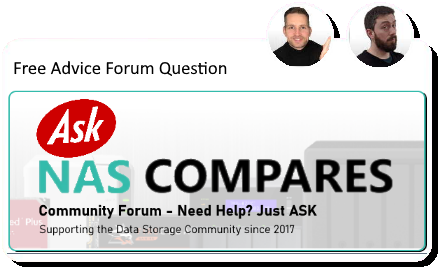Posts: 1,079
Threads: 1,080
Joined: Feb 2020
Reputation:
2
Ds923+ with 3 disk of 4tb 1 storage pool 1 volume Ext4.
I also have 4tb USB storage attached for backup.
What's the best strategy to go from Ext4 to BTRFS.
Is full backup. Delete volume, rebuild volume, restore. All apps are not backed up as not supported by hyper backup.
I have another volume for VM based on SSD and SSD cache on another SSD.
Virtual machine manager and container manager are not backed up. So I guess I will need to reinstall and configure.
I need som guidance on this
Yours
/JP
Posts: 5,338
Threads: 2
Joined: Jun 2022
Reputation:
35
Thanks for your message — happy to help you plan this out. You’re right that moving from EXT4 to BTRFS on a Synology NAS isn’t something you can just “convert in place.” Your strategy of backup → delete → rebuild → restore is indeed the correct approach. Here’s how I’d recommend you go about it step by step:
⸻
1️⃣ Back Up Your Data
• Use Hyper Backup to back up all the data on your EXT4 volume to your external 4TB USB drive.
• For apps: Hyper Backup doesn’t cover everything (as you noted). The apps themselves will need to be reinstalled manually later — you can still export their settings if the app allows it, but many don’t.
• Take note of your shared folder structure, permissions, and user accounts for easier recreation later.
⸻
2️⃣ Delete and Rebuild the Volume
• Once you’re absolutely sure your backup is complete and verified:
• Delete the current EXT4 volume.
• Recreate a new BTRFS volume on the same storage pool.
This will wipe the existing data, so double-check your backup before you do this.
⸻
3️⃣ Restore Your Data
• Use Hyper Backup to restore your data and shared folders from the USB backup to the new BTRFS volume.
• Recreate any shared folder permissions or custom settings that weren’t backed up.
⸻
4️⃣ Reinstall and Reconfigure Apps
• Manually reinstall Virtual Machine Manager, Container Manager, and any other apps you need.
• Unfortunately, these apps don’t back up configurations, so you’ll need to reconfigure your VMs and containers manually — it’s a pain, but at least your VM disk images (if stored on a separate volume) won’t necessarily need to be recreated if that volume wasn’t deleted.





